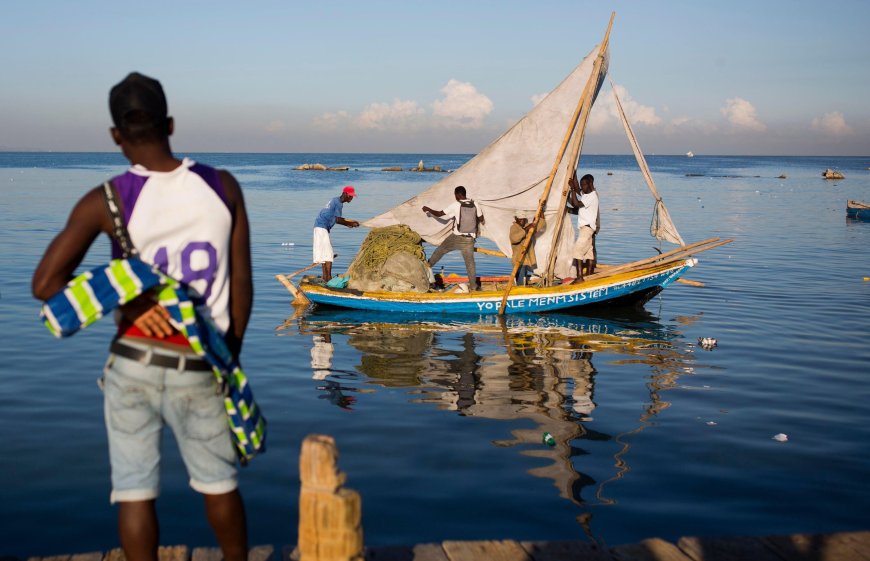Repurpose harmful fisheries subsidies to alleviate poverty
Repurpose harmful fisheries subsidies to alleviate poverty chinadialogue ocean

Each year, governments around the world give billions of dollars to their fishing sectors.
These public funds – around USD 35.4 billion annually, according to 2018 estimates – pay for everything from building ports to research and development.
Some subsidies can be beneficial, for example by promoting conservation. Others are classified as harmful because they promote overcapacity (too many vessels chasing the same fish) and overfishing. Subsidising fuel for long-distance fishing, for example, supports excessive fishing that overexploits both fish populations and fuel, the latter leading to more greenhouse gas emissions. Worryingly, harmful subsidies make up the bulk of fisheries subsidies.
Fishery subsidies currently perpetuate social injustice too. Over 90% of the world’s fishers work in the small-scale fishing sector, predominantly in developing countries where average income is below the World Bank’s extreme poverty threshold, such as the Democratic Republic of the Congo and Tuvalu. However, the majority of subsidies go to large, industrial fisheries – around 80% according to the most recent estimates.
This injustice is compounded by the fact that while harmful subsidies mainly originate from nations that score highly on the Human Development Index, in other words rich countries, they have a disproportionate impact on low or very-low HDI nations.
What is the Human Development Index?
HDI is a UN ranking of countries based on per-capita GDP, life expectancy and educational level
When unsustainable practices are carried out by industrial fleets, the sheer scale of the resulting damage depletes the fish populations that are crucial to coastal, small-scale fisheries. Therefore, subsidising industrial fleets can contribute to harming marine ecosystems, human livelihoods, food security and the socioeconomic wellbeing of coastal fishing communities.
These low-HDI nations already tend to have low management capacity and a larger number of vulnerable fish populations, and may also face pressure from the distant-water fleets of a handful of rich governments.
Progress and setbacks at international level
Despite widespread recognition that harmful fisheries subsidies must be removed to ensure sustainable fisheries, efforts to counter this situation are stalling. The most recent international negotiations on such subsidies, held in February 2024 under the auspices of the World Trade Organisation (WTO), were a major disappointment.
In 2022, WTO members took the historic step of agreeing to prohibit subsidies that facilitate illegal, unreported and unregulated (IUU) fishing, the exploitation of overfished populations, and fishing on the high seas. By contrast, this year’s negotiations failed to produce a second set of broader rules to ban subsidies that contribute more generally to overcapacity and overfishing.
In addition to this setback, the 2022 agreement has only been ratified by 71 WTO members as of March 2024; to come into force, it requires 110. So, many governments continue to subsidise the overexploitation of our oceans and the injustices this produces.
SDGs, Targets, and Indicators
| SDGs | Targets | Indicators |
|---|---|---|
| SDG 14: Life Below Water | Target 14.6: Prohibit certain forms of fisheries subsidies that contribute to overcapacity and overfishing | No specific indicators mentioned in the article |
| SDG 1: No Poverty | No specific targets mentioned in the article | No specific indicators mentioned in the article |
| SDG 2: Zero Hunger | No specific targets mentioned in the article | No specific indicators mentioned in the article |
1. Which SDGs are addressed or connected to the issues highlighted in the article?
SDG 14: Life Below Water
The article discusses harmful fisheries subsidies that contribute to overcapacity and overfishing, which directly relates to SDG 14, which aims to conserve and sustainably use the oceans, seas, and marine resources.
2. What specific targets under those SDGs can be identified based on the article’s content?
Target 14.6: Prohibit certain forms of fisheries subsidies that contribute to overcapacity and overfishing
The article highlights the need to redirect harmful fisheries subsidies towards alleviating poverty in coastal fishing communities. By eliminating these harmful subsidies, progress can be made towards achieving Target 14.6.
3. Are there any indicators mentioned or implied in the article that can be used to measure progress towards the identified targets?
No specific indicators are mentioned in the article that can be used to measure progress towards Target 14.6 or any other targets related to SDG 1 or SDG 2.
4. SDGs, Targets, and Indicators
| SDGs | Targets | Indicators |
|---|---|---|
| SDG 14: Life Below Water | Target 14.6: Prohibit certain forms of fisheries subsidies that contribute to overcapacity and overfishing | No specific indicators mentioned in the article |
| SDG 1: No Poverty | No specific targets mentioned in the article | No specific indicators mentioned in the article |
| SDG 2: Zero Hunger | No specific targets mentioned in the article | No specific indicators mentioned in the article |
Behold! This splendid article springs forth from the wellspring of knowledge, shaped by a wondrous proprietary AI technology that delved into a vast ocean of data, illuminating the path towards the Sustainable Development Goals. Remember that all rights are reserved by SDG Investors LLC, empowering us to champion progress together.
Source: chinadialogueocean.net

Join us, as fellow seekers of change, on a transformative journey at https://sdgtalks.ai/welcome, where you can become a member and actively contribute to shaping a brighter future.








